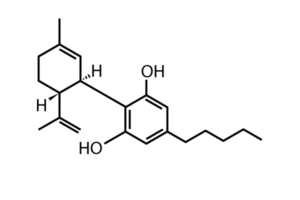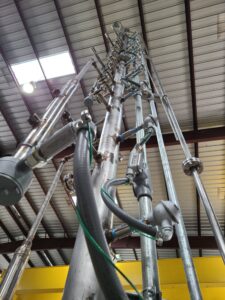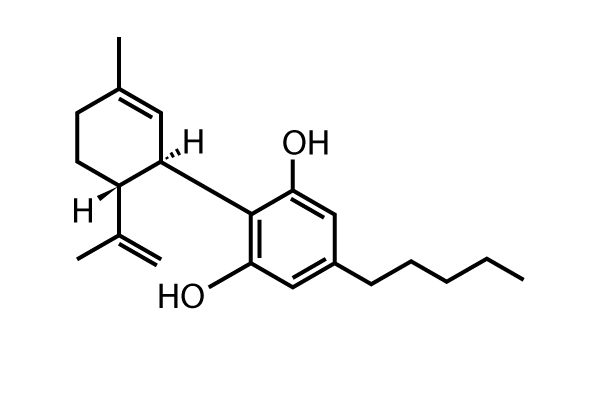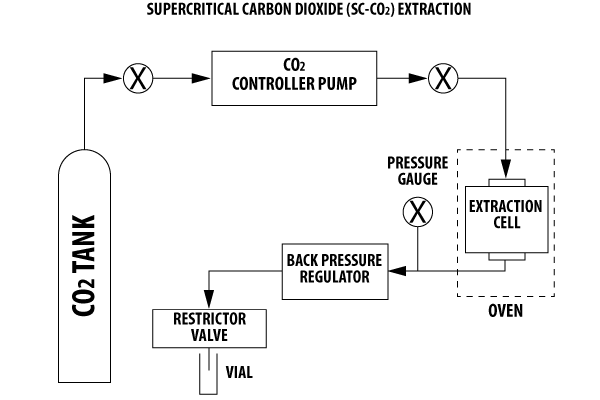CBD Extraction Methodologies
CBD Production Is On The Rise
The growth and manufacture of hemp and hemp-based products is one of the fastest growing industries in the United States. A majority of states legalized at least some form of medical hemp products. As of September 1, 2019 there are 11,994 active hemp licenses spread across 30 states. Not only is it desired for its utility as a raw material, but as more and more information about the potential medicinal effects of the compounds found within the plant are revealed, the demand for the processing and production of the chemicals in the commodity crop has increased exponentially.
HEMP Chemistry
The chemicals of interest found in hemp can be divided into three categories: flavonoids, terpenes, and cannabinoids. More than 200 bioactive compounds have been identified in cannabis. Of these compounds, approximately ten percent of them are flavonoids. Terpenes are also found in wide variety within hemp, with over 100 of them being found in different strains of marijuana. However, the chemicals that have drawn the most attention within hemp are the cannabinoids. The human body has naturally occurring cell surface receptors known as cannabinoid receptors, found mostly in the central nervous system or on T cells in the immune system. These receptors can interact with cannabinoids that either occur naturally within the body or are introduced from outside, affecting a number of physiological processes such as pain-sensation or memory. While the most notorious of the cannabinoids is THC, or tetrahydrocannabinol, which is well-known for its psychoactive effects, the compound that is of particular interest for its medicinal properties is cannabidiol, or CBD, with the compound already having shown promise treating a number of health conditions, such as epilepsy.

The most abundant cannabinoids found within marijuana are CBGA, CBDA, and THCA. These compounds on their own are not active within the human body, as they have a carboxylic acid group that differentiates them from their bioactive counterparts. As such, these compounds must undergo decarboxylation, which can be achieved through the addition of heat in order to convert them into CBG, CBD, and THC. If THC in the product is not desirable, it can be converted into CBN through the use of an oxidation reaction.
Cannabinoid Extraction Methodologies
Several methods currently exist for acquiring the cannabinoids found within hemp. One method that has seen fair amounts of use has been supercritical carbon dioxide extraction. In this method, carbon dioxide is placed under supercritical conditions, where it will have both liquid and gas properties. The supercritical fluid is then run through an extractor unit, where it pulls the oils containing the cannabinoids from the hemp. While the conditions required to make carbon dioxide supercritical can be costly, the product it generates is safe and pure. Others methods of extraction exist that rely on liquid solvents instead of supercritical carbon dioxide. The solvents most commonly utilized for the purposes of cannabinoid extraction are ethanol, propane, and butane. The solvents are mixed with the hemp plant matter, extracting the cannabinoids, and then boiled off to leave oil containing the compounds of interest. While cheaper than the supercritical carbon dioxide method, the use of these solvents has the potential to produce an extract that contains contaminants.
Sep-Pro Pyrolysis Extraction
Sep-Pro applies a pyrolysis reaction to break down raw hemp biomass into the components of interest. First, the cannabis biomass is loaded in bulk into a reactor, where it is heated by an external source to very high temperatures in the absence of oxygen. For the purposes of maximizing the production of condensable volatiles, a “fast” pyrolysis reaction is employed, characterized by a very high heating rate, a moderate final pyrolysis temperature, a short residence time, and a rapid quenching of the volatiles. The reactor used to carry out the pyrolysis reaction is a fluidized bed reactor. The crushed hemp is fed into a fluidized bed of inert solids, with the mixing of the solids providing good temperature control, as well as good heat transfer into the hemp solids. The reactor provides a short residence time for the gases produced. These conditions allow the biomass to begin undergoing pyrolysis reactions, causing the thermal decomposition of the biomass into volatile component, non-condensable gases, and char. The volatiles contain the cannabinoids, while the rest of the plant matter is contained in the char. The volatiles are then condensed into a bio-oil containing the cannabinoids of interest, while the non-condensable gases produced by the pyrolysis reaction are recycled back to the fluidized bed reactor.

Click here for more information about Sep-Pro Biomass Processing Solutions.
The bio-oil produced via pyrolysis is then distilled in order to achieve the necessary purity for the CBD product stream. The bio-oil is fed into a distillation column filled with pall ring packing, giving it plenty of heat and mass transfer area for the liquids and vapors in the column to contact one another. Heat is placed at the bottom of the distillation column for the purposes of boiling the liquid that accumulates there. The column contains trays at points where liquid is drawn off from the main column. The drawn off liquid enters side strippers that will remove the light components from the liquids via boiling, while the heavier components exit the bottom of the strippers as product streams. A stream of gases that are non-condensable exit the top of the column and are recycled back to the fluidized bed reactor.
Contact us today for more information about how to apply our unique approach to CBD Oil Extraction to your HEMP-related business.


